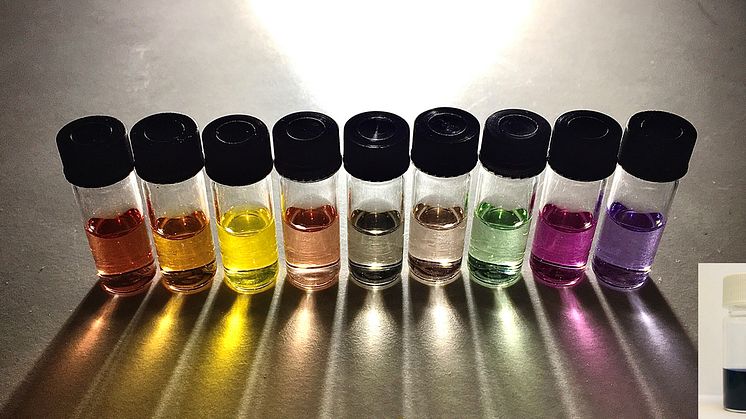Press release -
New nanomaterials with potential for environmentally friendly hydrogen production
In an article in the journal Energy and Environmental Science, researchers from Uppsala University, Sweden, present a type of low-cost and environmental-friendly organic polymer nano-material as photocatalysts for hydrogen generation, and propose the working mechanism of the photocatalytic reactive site.
Development of photocatalysts for light driven hydrogen generation from water is an ideal way to convert and store solar energy. Due to limited light absorption, high-cost and potential metal-pollutant from inorganic catalysts, scientists have started looking for organic alternative. In this work, the Uppsala researchers have studied organic polymers as photocatalysts (light-driven catalysts). The bottleneck of all existing organic photocatalyts is that they are hydrophobic (water insoluble), making it difficult for protons to penetrate into the pores of the materials and to interact with reactive sites. Consequently, the performance of photocatalysis based on those materials is still behind that of the traditional metal-based inorganic photocatalysts. Scientists have to add a lot of organic solvent in the reactor in order to make a good dispensability of organic polymeric photocatalyst.
Using a so-called Nano-scale precipitation method to prepare the organic polymeric photocatalyst into small nano-scaled particles (Pdots) can make the organic photocatalyst nicely dispersed in aqueous solution. “With help from hydrophilic co-polymer, we are able to provide proton channels inside the Pdot photocatalyst to mimic the naturural photosynthesis system. This can dramatically improve the performance of hydrogen generation” says Haining Tian, Docent from Department of Chemistry - Ångström Laboratory. His research group published the proof-of-concept work last year (in Angew. Chem. Int. Ed., 2016, 55(40), 12306). In order to understand more about the system and further improve it, Haining Tian together with his research colleague C. Moyses Araujo from Department of Physics-Ångström Laboratory have jointly led the work to dig out the reactive sites in the Pdot photocatalyts and photocatalytic working mechanism.
By tuning the structure of polymers and evaluating different photocatalytic mechanisms, the researchers could approximately find the reactive sites located at the electron acceptor units and concluded that the heteroatoms should play a crucial role on photocatalytsis. "It is difficult to experimentally get accurate information on which heteroatom, either N or S, is the reactive site in the electron acceptor unit” says Haining Tian. With help from a computational study based on first-principles theory, the scientists eventually targeted the real reactive site in Pdots photocatalysts – the N atoms – and also concluded that the unique Pdots structure is beneficial for proton reduction reaction. “Hydrogen bond formed between two polymers in Pdot photocatalysts significantly lowers the energy barrier of proton reduction reaction. The Pdots is indeed a type of ideal photocatalysts” says C. Moyses Araujo.
On the basis of this work, the scientists are now aiming at more efficient and stable Pdots catalyst by reasonably tuning the polymer structure for light driven hydrogen generation.
Read the article “Experimental and Theoretical Study of an Efficient Polymer Nano-Photocatalyst for Hydrogen Evolution".
For more information, contact:
Dr. Haining Tian, email: haining.tian@kemi.uu.se ; phone +46-(0)73 953 0993, or
Dr. C. Moyses Araujo, email: moyses.araujo@physics.uu.se ; phone +46-(0)73 514 0739.
Topics
Uppsala University -- quality, knowledge, and creativity since 1477
World-class research and outstanding education of global benefit to society, business, and culture.
Uppsala University is one of northern Europe's highest ranked academic institutions. www.uu.se

